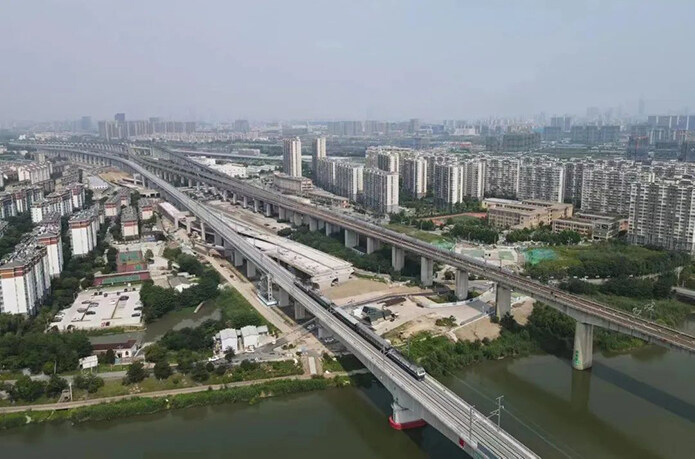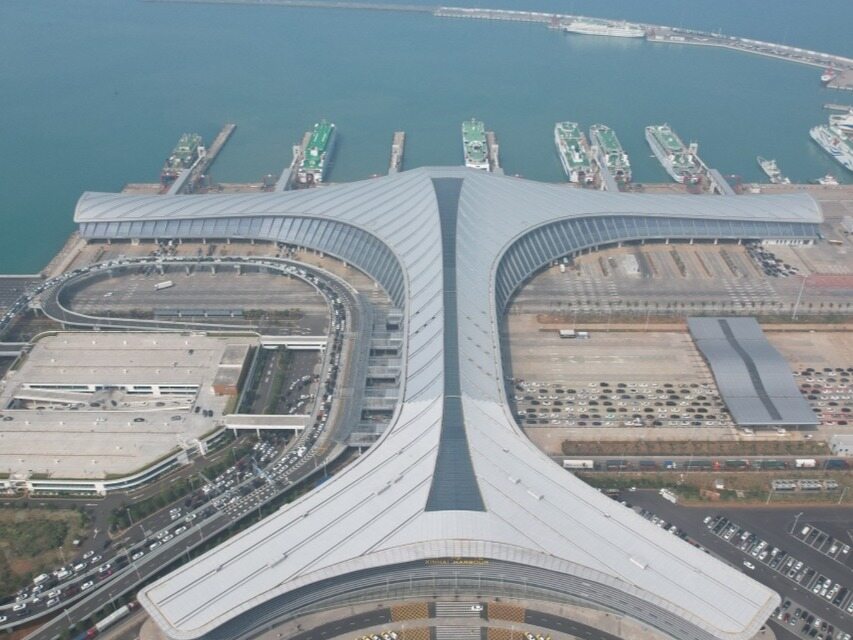- The total length of the Shanghai Nanjing Yangtze River high-speed railway line is 279 kilometers
- The construction of the Shanghai Nanjing Yangtze River High Speed Railway began in October 2018 and began acceptance in May 2023

On June 15, 2023, with the first inspection train leaving from Nanjing South railway station and heading east to Taicang Station, the Shanghai Nanjing high-speed railway along the river enters the stage of joint commissioning and test, which is one step closer to the opening and operation.

The Shanghai Nanjing High speed Railway along the Yangtze River starts from Nanjing South railway station, passes through Nanjing, Zhenjiang, Changzhou, Wuxi and Suzhou in Jiangsu Province, reaches Taicang Station, and connects to the Shanghai Railway Terminal through the Shanghai–Suzhou–Nantong railway. The total length of the line is 279 kilometers, and the design speed is 350 kilometers per hour.
The entire line of the Shanghai Nanjing Yangtze River High Speed Railway consists of 8 stations: Nanjing South, Jurong, Jintan, Wujin, Jiangyin, Zhangjiagang, Changshu, and Taicang. Among them, Nanjing South, Zhangjiagang, Changshu, and Taicang stations are existing stations, while Jurong, Jintan, Wujin, and Jiangyin stations are new stations.

The construction of the Shanghai Nanjing Yangtze River High Speed Railway began in October 2018, with full track laying starting in September 2022 and static acceptance starting in May 2023. Since the start of the project construction, the railway department, together with the construction unit, has overcome multiple difficulties to ensure the timely achievement of various node goals. At present, the roadbed, bridge, tunnel, track, four power supply and station building projects of the project have been completed, and meet the conditions for joint debugging and testing.
After the static acceptance of the project is completed, with the goal of reaching the design speed, the joint commissioning and test is to conduct comprehensive tests by using train detection, comprehensive train detection, Multiple unit testing and relevant testing equipment, evaluate and verify the performance or function of traction power supply, catenary, communication, signal, customer service, disaster monitoring and other systems, verify the applicability of Structural engineering such as track, turnout, subgrade, bridge, tunnel, and evaluate the comprehensive grounding Whether the electromagnetic environment and other equipment and facilities meet the requirements of relevant standards, in order to provide technical support for the debugging and optimization of various business systems and the overall system of the entire line, and ensure that the line functions and performance meet the standard requirements. After the joint debugging and trial run of the Shanghai Nanjing Yangtze River high-speed railway, it will enter the operational testing phase.

The Shanghai Nanjing high-speed railway along the Yangtze River is the backbone line of the intercity rail transit network in the Yangtze River Delta region, and together with the Beijing Shanghai high-speed railway and the Shanghai–Nanjing intercity railway, it forms the high-speed railway artery radiating westward in the Yangtze River Delta region. After the opening of the line, it will further shorten the spatial and temporal distance between counties and cities in southern Jiangsu and Shanghai and Nanjing, which is of great significance for improving the regional rapid railway network and promoting the economic and social development of the southern Yangtze River region in Jiangsu. Editor/Xie Li
Comment
 Praise
Praise
 Collect
Collect
 Comment
Comment
 Search
Search














Write something~